As we enter our home stretch for Walls for Women—the first mural of which begins this weekend—I’m up to my ears in more small-town politics than I’ve ever thought possible. Suddenly, SVV and I are being consulted regularly to mediate with city commissions or serve as constitutional experts (some might even say sea lawyers). The actual painting of the mural is the relatively quick and fun part; it’s the discussions the nine months that precede it that people don’t realize go into making a single piece of public art happen.
And now that we are in year three of running a public art nonprofit and have a very long running document of FAQs we get from city councils and property owners alike, let’s debunk some myths about murals, shall we?

I own a building in a downtown core. Do I have to get permission to paint a piece of art on it?
Absolutely not. Unless you have a very strict Historic Zoning Commission that has bylaws or ordinances—many of which are borderline unconstitutional; a 1998 survey by the National Alliance of Preservation Commissions found that 15% of responding commissions had, in fact, been sued—then a city government can’t restrict things like paint color or your ability to express yourself through the addition of art, which is granted to all U.S. citizens under the First Amendment.
Many cities that have historic overlays have a COA (certificate of appropriateness) process that building owners in the zone are requested to go through, but these should be looked at as courtesies rather than requirements since the U.S. Constitution, and the sacred freedom of speech that has been the bedrock of our existence as a nation since the late-1700s, will always trump local codes that may not be in line with the founding document of our country.
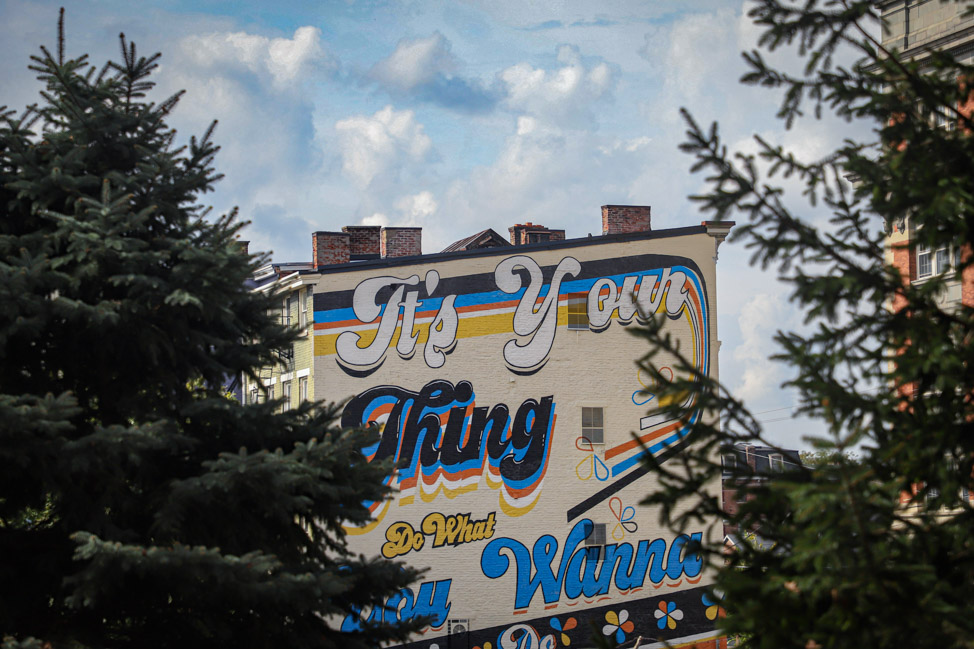
My downtown is an accredited Main Street program. So I can’t put art on my building … can I?
You absolutely can! We’re not sure where or how this myth came about that by deciding to improve the integrity and longevity—not to mention, curb appeal—of your building through a coat of exterior paint came about, but we saw a newbie downtown director try to make this very claim to a building owner in our town when she elected to paint a two-foot-tall LEGO Man on the front of her building last fall. The property owner got a frantic call from said director telling her there was funding to fix up their building but “you must stop the guy from spray-painting your wall—immediately.” Sounds very fishy to me indeed!

one of many street-facing murals in Tupelo’s thriving Main Street district
To put this theory to rest that public art on a façade is suddenly going to rule you out of any sort of future historical grants, we went straight to the CEO of the Main Street America program who laughed when we told her what that downtown director did. “I’m not sure where she got that idea, but we not only love public art, we encourage it,” she told me on the phone a couple months ago.
At least three of the murals going up for Walls for Women are happening in accredited Main Street districts, and for the second consecutive year, we also were the recipient of grants from the Tennessee Arts Commission to make a few of these happen. I hardly think a state agency would financially support a placemaking project that would ruin a city’s historical character, do you?
To back this up with facts, take the country’s most historically significant city, Philadelphia, as a prime example of historic preservation and revitalization living in harmony. Not only is the City of Brotherly Love essentially base camp for the modern mural movement, but it’s on its third generation of murals in many neighborhoods. The city as a whole is home to more than 2,500 murals, thanks largely to Mural Arts Philadelphia—who has been responsible for installing 4,000+ in its 35-year history—and the historic downtown boasts dozens. How a city cares for its buildings is a direct reflection of how it cares about its residents, and Philadelphia is a place I’d love to call home simply for its support of the arts and devotion to its citizens’ well-being.
I want a piece of art, but the HZC says it must be “historically significant.”
HZCs must be content neutral, meaning legally they can’t be making sweeping subjective statements like that, nor can they say “you can paint a flower but not a sad clown on your building.” Secondly, you don’t make history by copying it. This notion that you can only have a mural that depicts a wagon wheel, a horse-drawn carriage, a train, a plane, and/or scenes from a bygone era is both laughable and sad. I can’t think of a mural I’d less like to go out of my way to see than one that is buildings on buildings (or a picture of the town in its “olden days”). Yawn. Next, please.
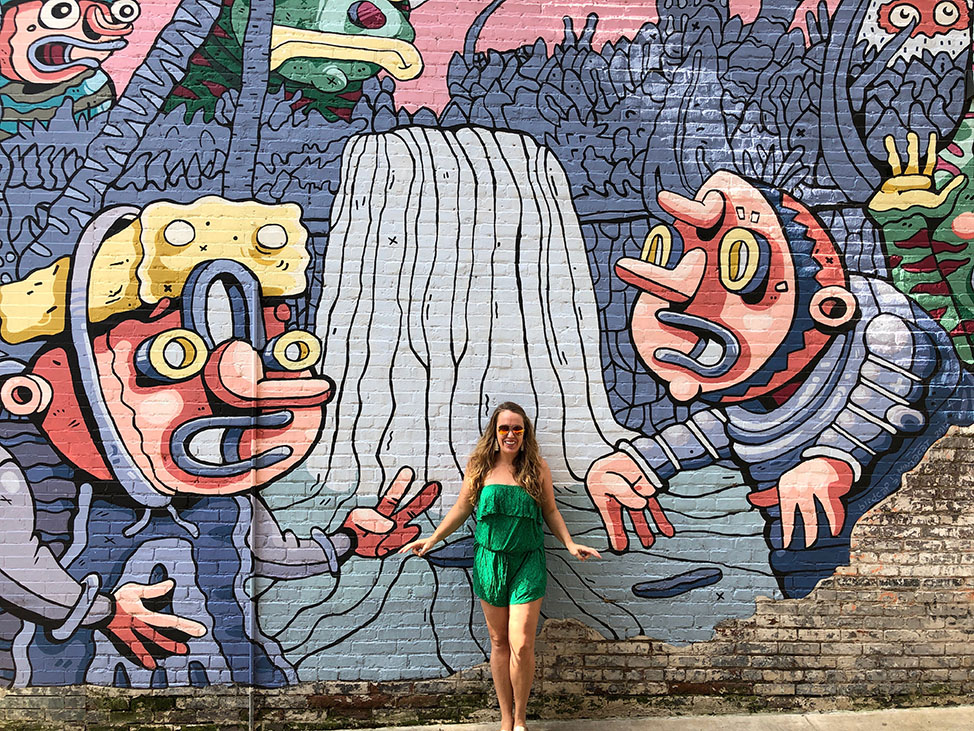
Secondly, I can’t think of anything more historic than art. It’s how every civilization from the beginning of documented time communicated their stories to the next generation. The Mesopotamians used clay to record history and stories; the First peoples in the United States etched drawings in caves that reflect more than 6,000 years of history on this hallowed land and created monuments to the gods across Central and South America; the Europeans from the era of recorded history have not only created but funded the creation of arts that define it as a civilization. The list goes on, immeasurably, and in modern times some of the most recognizable landmarks have been created within the last 10 years in cities across the world. The question should be: Is there anything more “historically significant” than unique artworks?

Art is often a measure of the moment and a conduit to the divine. I can’t think of a better way to document and have a shared experience with each other as a community than encouraging the installations of epic murals, and it’s hard to understand the miseducation of some of these folks on Historic Zoning Commissions who we have encountered.
And if we’re truly talking about what is or isn’t subjectively “historic,” it bears noting that murals are no new form of art, even though they’re cropping up more and more again; ghost signs still peek out from old buildings, depicting early 20th century advertising from 100 years ago or more. Most city HZCs not only protect, but encourage the restoration of ghost signs, something SVV and I are largely in support of. Still, you’re telling me that a building owner can preserve a tobacco ad that promotes unhealthy behavior, yet his neighbor can’t be the catalyst for creating new art by exercising First Amendment rights and allowing a muralist to leave a piece of documented history behind on his building? There’s some major disconnect here with historic zones and we’re often left speechless by this behavior.
So what they’re telling me about these vague references to Secretary of Interior standards regarding murals are false?
The Secretary of the Interior’s Standards are often what HZCs reference for establishing their own regulatory guidelines. There’s a lot of legalese and architectural jargon contained within the standards that form a baseline to communities who want to figure out how to preserve old buildings, but it’s interesting to note that, as thorough as the standards are, they don’t try to define art. They don’t even go there because it’s fraught with peril for our government to even attempt regulating speech, and for good reason.
The arbitrary nature of an individual human’s aesthetic taste confers too much power over the sanctity of us as citizens, and I can’t tell you how much we appreciate the foresight of our founders, who risked their lives to create something that has made us stand out as a shining beacon of freedom to the world. Raise your hand if you want an appointed stranger to pick out the clothing you wear, the car that you drive or how to spend the money that you’ve earned. Anyone? It’s the exact same concept.
Most of these volunteer historic zoning boards are volunteers, and to be fair they don’t have a lot of actual guidance in their efforts to regulate private property towards an ideal. It’s really difficult to thread that needle and is something we’ll talk about in detail in another blog post since SVV served on one of these commissions before becoming disillusioned by the process and the capricious nature of exerting regulatory authority by the other members.
There is one recent quote from an HZC chairman that I’d like to share that illustrates this perfectly: “I was opposed to [the mural] because it was not consistent with the Secretary of Interior’s standards. It would overwhelm and distract from the historic character of the building and district. There are ways to incorporate murals into historic districts that complement the architecture and this proposal didn’t meet that criteria in my professional opinion.” I’m sure you can see the problem with this line of thinking. How do you define “overwhelm” and “complement?” Do you think any of our cool cities and now-historic buildings would have been built underneath the auspices of this thought process?
Rather, we like to reference the opinion of actual constitutional scholars—more specifically, the 400,000 attorneys with law degrees who comprise the American Bar Association—who have published many helpful resources for cities looking to “regulate” art.
Got it. I’m starting to see the light. Still, my building is brick, so I can’t paint that, can I?
Actually, you can and likely should. If the goal of you (or the HZC) is to preserve a building in the central core of a community, the absolutely worse thing you can do is let this old brick and crumbling mortar be exposed to the elements. It’s prohibitively expensive to restore an earthen building block like brick and extremely rare that your particular brick is a representative example of something that should be preserved at all costs in its original state. Again, we’ll go into more details on the ins-and-outs of this in a future story, but the point of maintaining or restoring a building is to keep, you know, using it as a building.
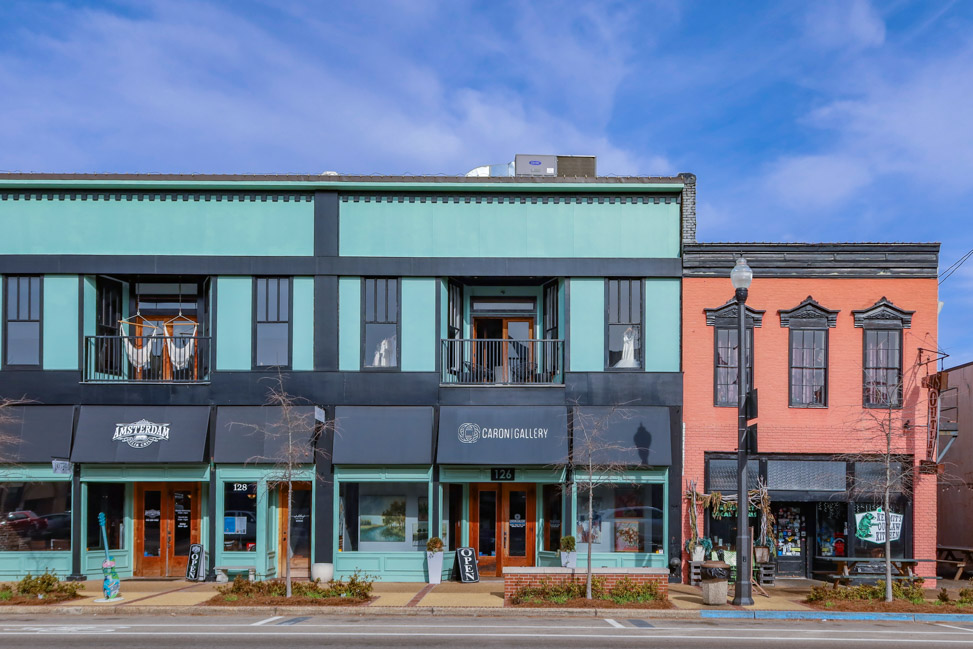
If a building rots from the inside out, as thousands of them across rural America are currently doing, you’ll lose it entirely. Liquid paint seals and shores up the structure, quickly alters the aesthetic character of your property and has been used from the beginning in small towns. All of our favorite historical districts in hundreds of areas across the U.S. don’t even flinch if you’d like to paint your building. It means that you care about it and it’s hard to ask for more than that.
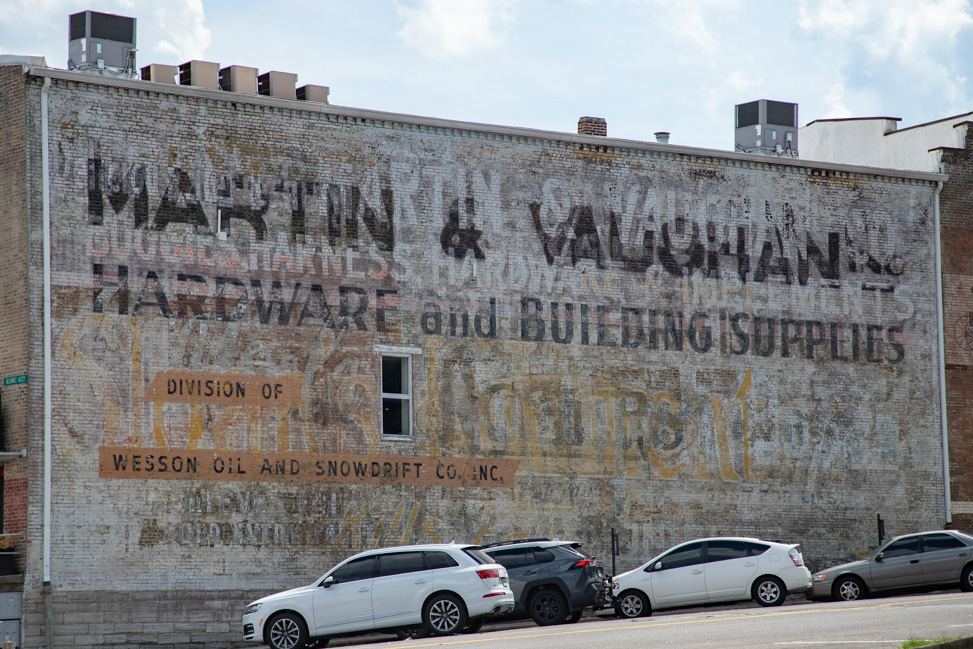
So, uh, should I tell the HZC I’m painting my building then?
I wouldn’t even open that can of worms. We’ve gone down the path of looping in city Historic Zoning Commissions three times in the past, and it’s led to a mess every single time (and, we’ve had dozens of individuals reach out to us privately to share the exact same experience). In fact, our Martin building owner for Walls for Women gave his HZC the courtesy of being privy to his plans, and that resulted in the same board banning all murals. For more about this unconstitutional tale of bullying and small-town government overreach, read this post.
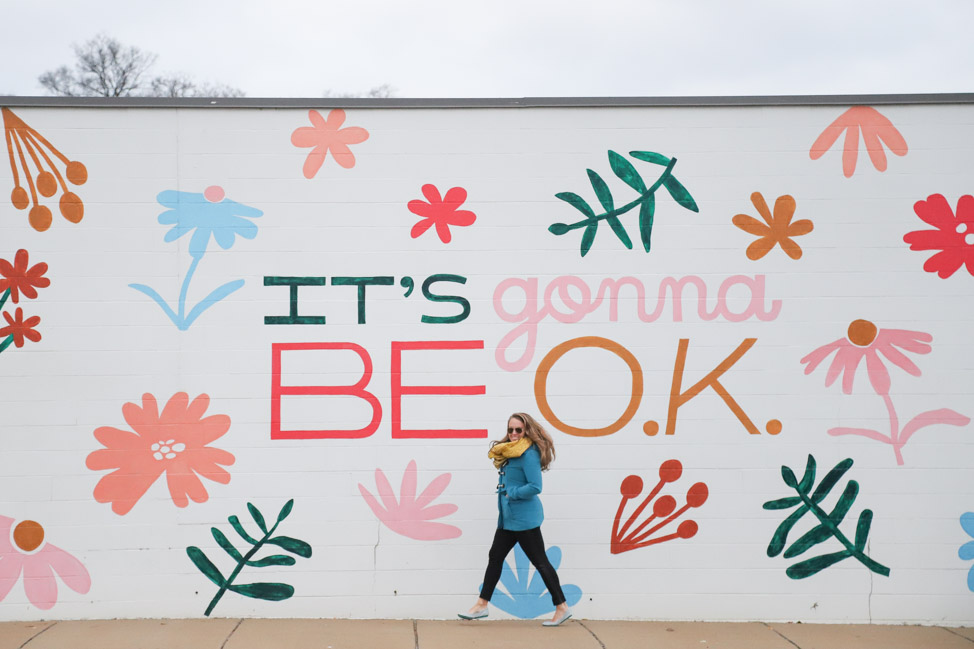
OK, since I’m free to paint my building as it’s my private property, then I can just put my logo on it and be done, right?
Logos and other design elements that would be considered advertising your business fall under sign ordinances and less-protected commercial speech. They are not considered original art. Therefore, you’d have to go in front of your local zoning commission to get signage approval. In our experience, the parameters are typically that you can paint 10 percent of the side of your building with your company name or logo, but each city approaches signage differently. Private HOA neighborhoods are also places that have the ability to regulate artwork, color, landscaping, etc., so do your research if you live in one of those.
On the other hand, original art is not restricted and is much more powerful in advertising your business. This is why we push building owners to adopt a mural instead of another boring sign. It works twofold: You give the community a beautiful gift to look at on the daily, and bonus, it drives far more attention to your building than a traditional sign would. Keep the sign announcing what your business is over the door; use a large blank wall to allow an artist the ability to create. Everyone wins!

I bought a building that already has a mural on it I’m not wild about. Surely I can paint it over, right?
Not so fast. You need to first check the agreement with the original property owner, and then reach out to the artist to inform him/her of your plans (for all DMA murals, for example, property owners sign a contract that states they’ll keep the art up for a minimum of three years).

In 1990, Visual Artists Rights Act (VARA) was enacted as federal law to protect artists’ work and to prevent intentional modification to their art and the destruction of their work. Murals fall under this act, though this issue is far more nuanced than it seems.
**********
Got a question about installing murals or private property rights as they pertain to art? Ask away in the comments! We aren’t lawyers, it bears noting, but we’ve spent a lot of time working through these issues on the front lines of the public art movement through establishing our public art nonprofit, DMA-events. We’re also always more than willing to consult with city governments and other groups who need assistance in developing their own public art program.
Here are additional resources and articles we’ve written or referenced about murals:
- Art Talk: How to Start a Mural Program in Your Own Town
- Can Government Regulate Art? The Many Nuances of Mural Law
- City apologizes after violating First Amendment rights
- Using Murals in Marketing and Social Media: Are You Violating Someone’s Copyright?
- Artists Assert VARA Rights to Protect Street Art
PIN IT HERE
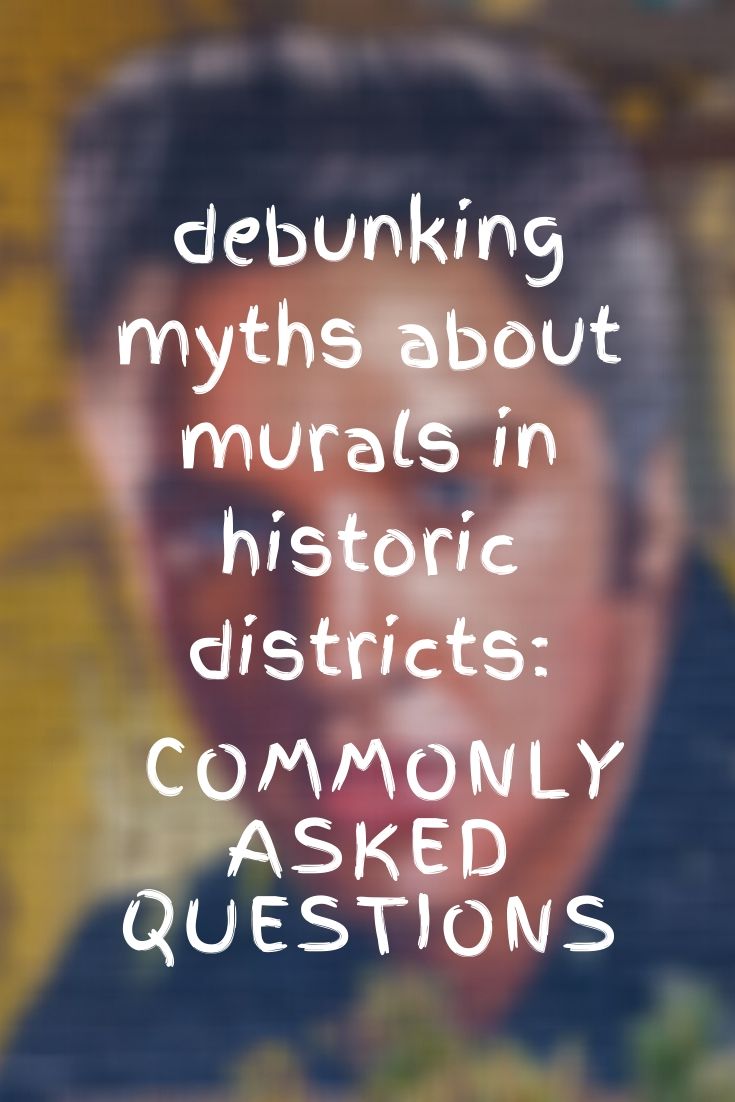

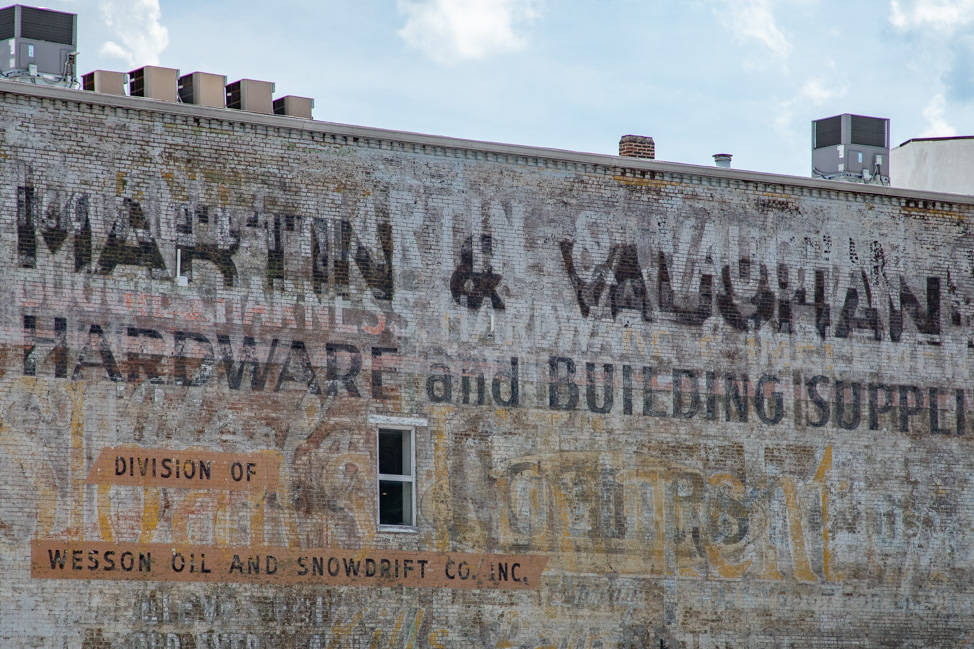


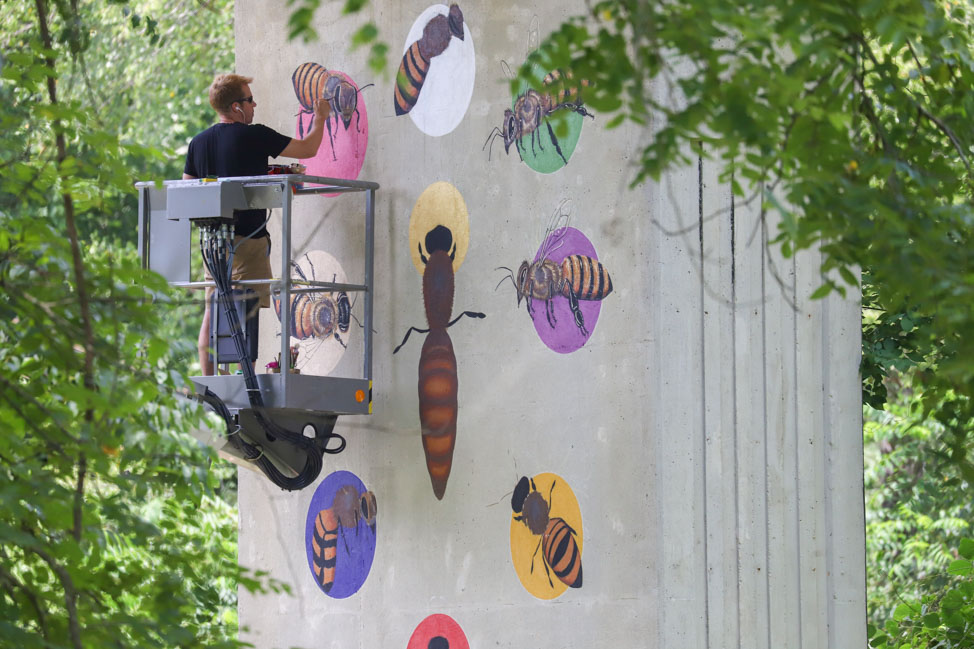
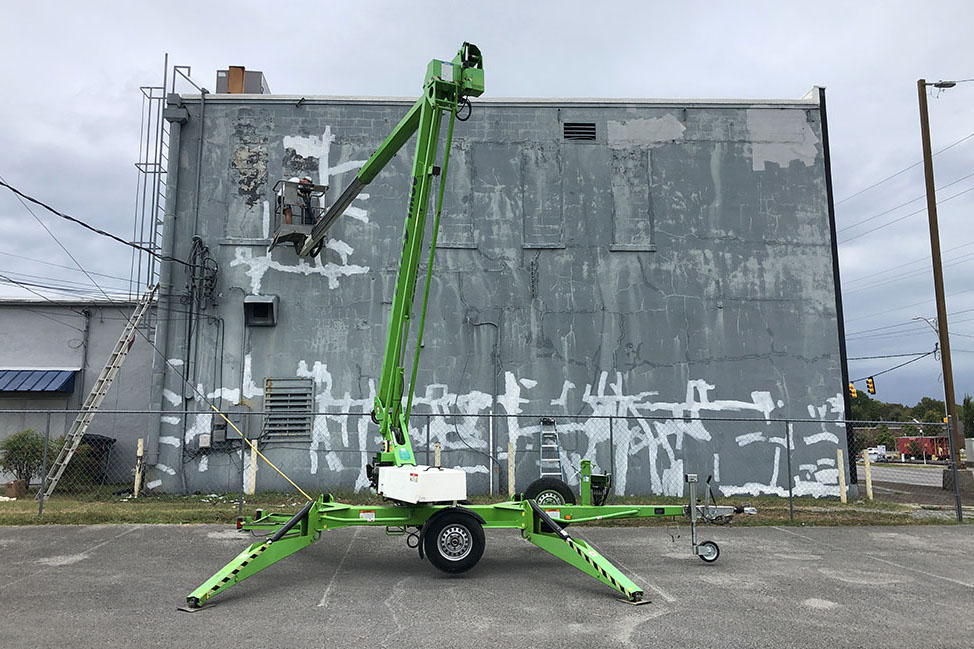










This post is extremely informative and love all the murals. Thank you for sharing.